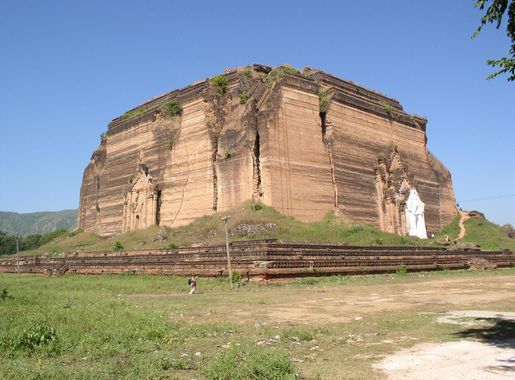
The Cultural Heartbeat of Myanmar: Mandalay
Discover Mandalay, a city where ancient traditions meet modern vibrancy, offering a rich tapestry of culture, history, and culinary delights in the heart of Myanmar.
Mandalay, the second-largest city in Myanmar, is a treasure trove of culture and history. It was the last royal capital of Myanmar and remains a vibrant center for traditional arts and crafts. As you walk through its bustling streets, you'll encounter a blend of old-world charm and modern vibrancy, making it a must-visit for any traveler. The city is famous for its many monasteries, temples, and pagodas. One of the highlights is the Mandalay Hill, which offers a panoramic view of the city and the Irrawaddy River. The climb to the top is dotted with shrines and monasteries, making it a spiritual journey as well as a physical one. The iconic Kuthodaw Pagoda, known as the world's largest book, houses 729 marble slabs inscribed with Buddhist teachings. Mandalay is also a hub for traditional Burmese arts. You can witness artisans at work, crafting delicate gold leaf, intricate wood carvings, and exquisite silk tapestries. The city comes alive during the annual Thingyan Water Festival, a celebration filled with music, dance, and water fights. Don't miss a visit to the Mandalay Palace, a sprawling complex that gives a glimpse into the grandeur of the Burmese monarchy. Food lovers will delight in the city's culinary offerings, from street food stalls to fine dining restaurants. Try local delicacies like mohinga, a fish noodle soup, and laphet thoke, a fermented tea leaf salad. Mandalay's night markets are bustling with activity and are the perfect place to sample a variety of local dishes. Mandalay offers a unique blend of spiritual depth, cultural richness, and modern energy. Whether you're exploring ancient temples, enjoying local cuisine, or simply soaking in the city's vibrant atmosphere, Mandalay promises an unforgettable experience.
Local tips in Mandalay
- Wear comfortable shoes for the climb up Mandalay Hill; it's steep but worth it for the view.
- Visit the local markets early in the morning for the freshest produce and a lively atmosphere.
- Respect local customs when visiting temples—dress modestly and remove your shoes.
- Hire a local guide to get deeper insights into the city's history and culture.
- Exchange currency at official outlets; avoid street vendors for better rates and security.
The Cultural Heartbeat of Myanmar: Mandalay
Mandalay, the second-largest city in Myanmar, is a treasure trove of culture and history. It was the last royal capital of Myanmar and remains a vibrant center for traditional arts and crafts. As you walk through its bustling streets, you'll encounter a blend of old-world charm and modern vibrancy, making it a must-visit for any traveler. The city is famous for its many monasteries, temples, and pagodas. One of the highlights is the Mandalay Hill, which offers a panoramic view of the city and the Irrawaddy River. The climb to the top is dotted with shrines and monasteries, making it a spiritual journey as well as a physical one. The iconic Kuthodaw Pagoda, known as the world's largest book, houses 729 marble slabs inscribed with Buddhist teachings. Mandalay is also a hub for traditional Burmese arts. You can witness artisans at work, crafting delicate gold leaf, intricate wood carvings, and exquisite silk tapestries. The city comes alive during the annual Thingyan Water Festival, a celebration filled with music, dance, and water fights. Don't miss a visit to the Mandalay Palace, a sprawling complex that gives a glimpse into the grandeur of the Burmese monarchy. Food lovers will delight in the city's culinary offerings, from street food stalls to fine dining restaurants. Try local delicacies like mohinga, a fish noodle soup, and laphet thoke, a fermented tea leaf salad. Mandalay's night markets are bustling with activity and are the perfect place to sample a variety of local dishes. Mandalay offers a unique blend of spiritual depth, cultural richness, and modern energy. Whether you're exploring ancient temples, enjoying local cuisine, or simply soaking in the city's vibrant atmosphere, Mandalay promises an unforgettable experience.
When is the best time to go to Mandalay?
Iconic landmarks you can’t miss
Mahamuni Pagoda
Explore the spiritual heart of Mandalay at Mahamuni Pagoda, a breathtaking Buddhist temple with rich cultural heritage and stunning golden Buddha.
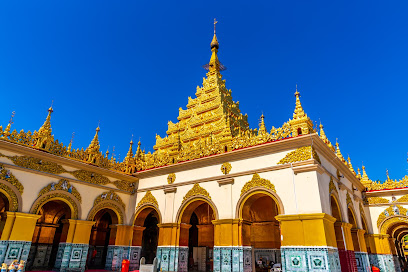
Kuthodaw Pagoda
Discover the serenity and architectural beauty of Kuthodaw Pagoda, home to the world's largest book of Buddhist scriptures in Mandalay, Myanmar.

U-Bein Bridge
Explore the U-Bein Bridge, the world's longest teak bridge, and immerse yourself in the breathtaking beauty and rich heritage of Mandalay, Myanmar.
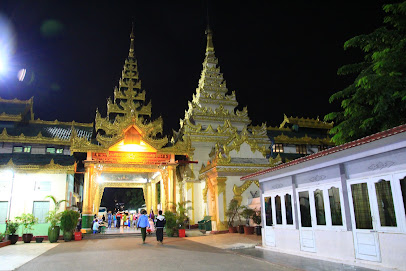
Zay Cho
Experience the vibrant culture and local flavors at Zay Cho Market in Mandalay, where shopping and culinary delights come together in a lively atmosphere.

Hsinbyume Pagoda (Myatheindan Pagoda)
Discover the awe-inspiring Hsinbyume Pagoda, a stunning white architectural wonder and spiritual sanctuary in Min Kun, Myanmar.
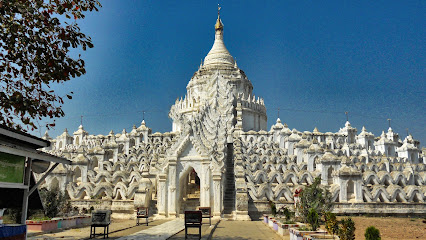
Su Taung Pyae Pagoda
Discover the spiritual heart of Mandalay at Su Taung Pyae Pagoda, where breathtaking views meet rich cultural heritage.

Kaunghmudaw Pagoda
Explore the beauty and serenity of Kaunghmudaw Pagoda, an iconic Buddhist temple in Sagaing, Myanmar, showcasing stunning architecture and rich cultural heritage.
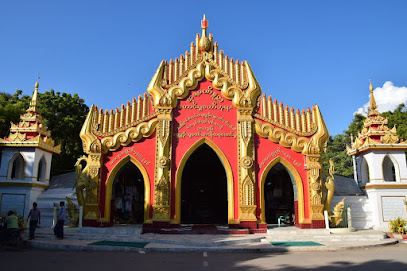
Mingalar Mandalay
Experience the perfect blend of business and leisure at Mingalar Mandalay, a serene business park in the heart of Myanmar's cultural capital.
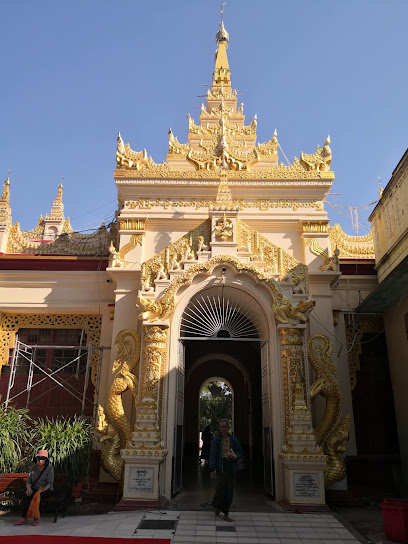
Unique Mandalay Tea Room
Experience the essence of Mandalay at Unique Mandalay Tea Room, where authentic flavors and a serene atmosphere await.
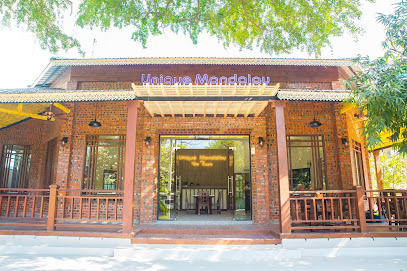
Shwenandaw Buddhist Temple
Explore the exquisite Shwenandaw Buddhist Temple in Mandalay, a masterpiece of teak architecture and intricate carvings representing Myanmar's rich spiritual heritage.
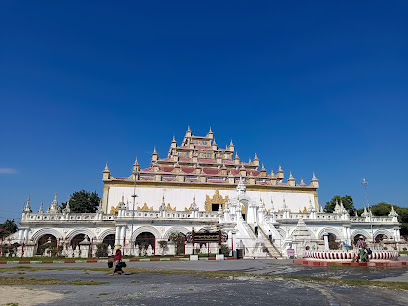
Shwe Pyi Moe Cafe
Explore the flavors of Mandalay at Shwe Pyi Moe Cafe, where traditional Burmese cuisine meets a cozy atmosphere.
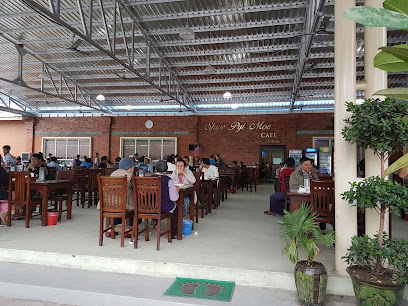
Chinatown Night Market
Explore the vibrant Chinatown Night Market in Mandalay for a unique blend of local culture, delicious street food, and artisanal crafts.
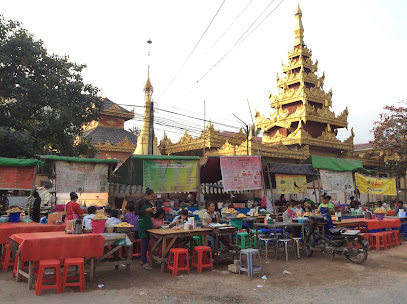
Mandalay Hill
Explore Mandalay Hill, a serene mountain peak in Myanmar offering panoramic views, ancient pagodas, and a peaceful escape from the bustling city.
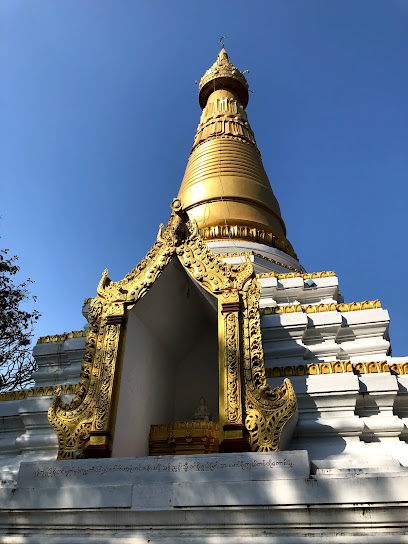
Daung Lann Gyi
Experience authentic Burmese cuisine at Daung Lann Gyi, a culinary gem in Mandalay offering delicious dishes and a welcoming atmosphere.
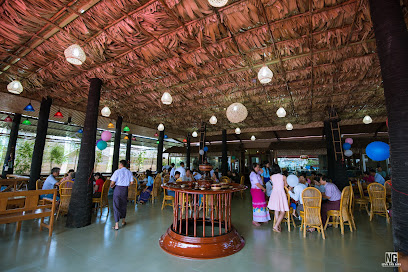
Sandamuni Pagoda
Explore the serene beauty of Sandamuni Pagoda, a stunning Buddhist temple in Mandalay, known for its white stupas and rich cultural significance.
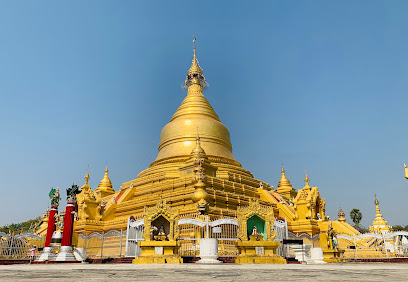
Unmissable attractions to see
Mahamuni Pagoda
Explore the spiritual heart of Mandalay at Mahamuni Pagoda, home to a revered golden Buddha and rich cultural traditions.
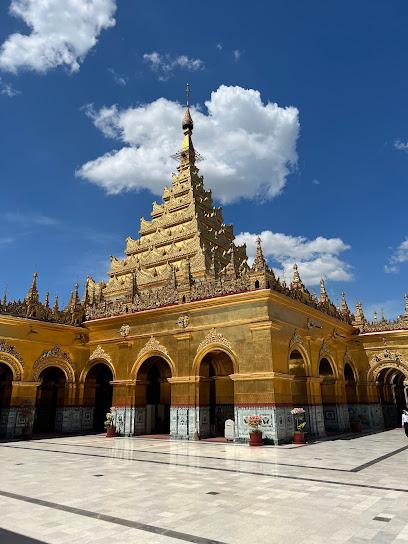
National Kandawgyi Gardens
Explore the lush landscapes and vibrant flora of National Kandawgyi Gardens, a tranquil escape in Pyin Oo Lwin, Myanmar.
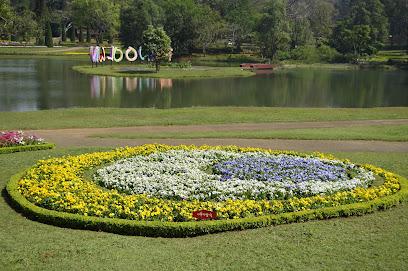
Kuthodaw Pagoda
Discover Kuthodaw Pagoda in Mandalay, home to the world's largest book and a treasure of Buddhist heritage, art, and serenity.
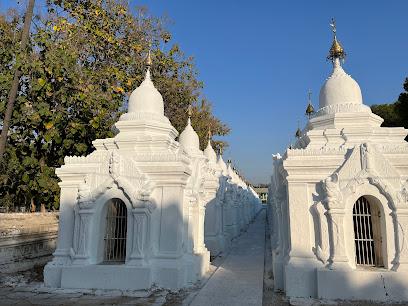
Hsinbyume Pagoda (Myatheindan Pagoda)
Discover the enchanting Hsinbyume Pagoda in Min Kun, a stunning architectural gem that embodies Myanmar's spiritual heritage and cultural depth.
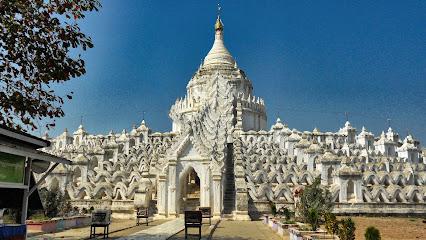
Soon Oo Pon Nya Shin Pagoda
Experience the serene beauty and rich culture at Soon Oo Pon Nya Shin Pagoda in Sagaing, a must-visit Buddhist temple for every traveler.
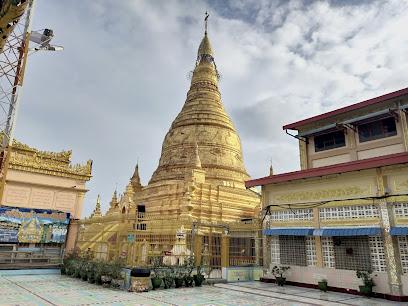
Mingun Pahtodawgyi
Discover the grandeur of Mingun Pahtodawgyi, an unfinished stupa in Myanmar that showcases the ambition of ancient architecture amidst serene landscapes.
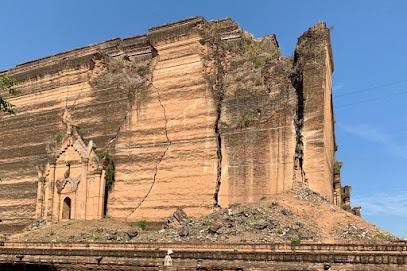
Sandamuni Pagoda
Discover the serene beauty of Sandamuni Pagoda, a must-visit Buddhist temple in Mandalay, Myanmar, known for its stunning architecture and rich cultural heritage.
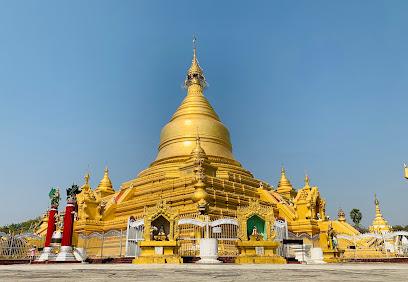
Eain Daw Yar Pagoda
Discover tranquility and breathtaking architecture at Eain Daw Yar Pagoda, a must-see Buddhist temple in the heart of Mandalay, Myanmar.
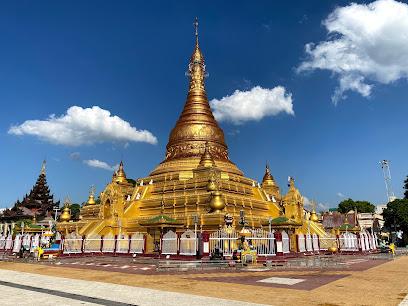
Shweinbin Monastery
Experience the serenity and beauty of Shweinbin Monastery, a must-visit Buddhist temple in Mandalay, Myanmar, known for its stunning architecture and peaceful ambiance.
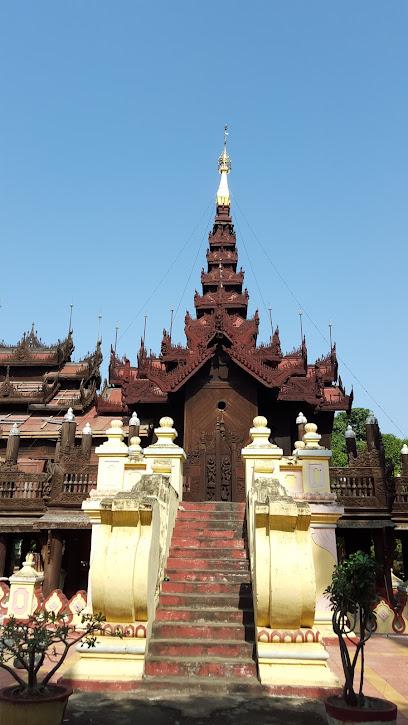
Kyauktawgyi Pagoda
Discover the serene beauty and spiritual heritage of Kyauktawgyi Pagoda in Mandalay, a majestic Buddhist temple with a stunning marble Buddha.
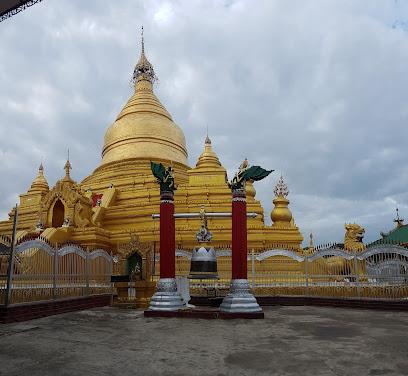
King Galon Gold Leaf Workshop
Experience the rich tradition of gold leaf making at the King Galon Gold Leaf Workshop in Mandalay, a must-visit cultural gem for travelers.
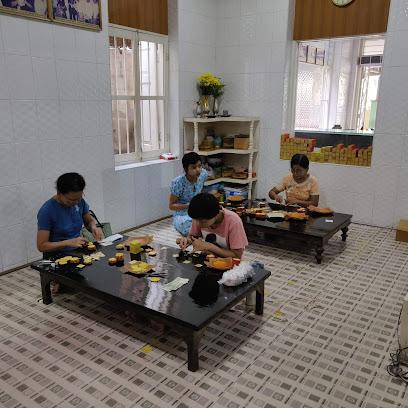
Nanmyint Tower
Explore Nanmyint Tower in Inn Wa: A Leaning Historical Landmark Offering Stunning Views and Rich Cultural Heritage.
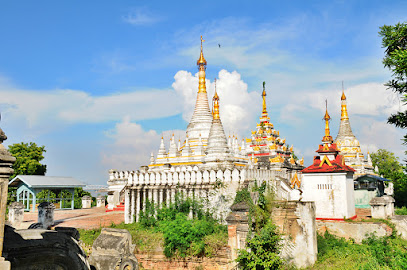
မဟာဂန္ဓာရုံကျောင်းတိုက်
Experience the spiritual tranquility and architectural beauty of Mandalay's renowned monastery, a serene retreat for cultural enthusiasts and travelers alike.
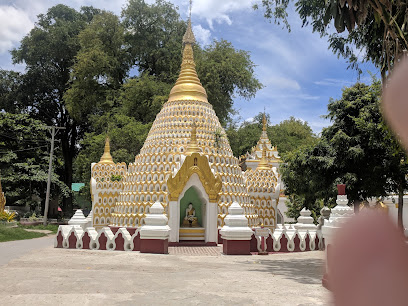
Little Stars Water Park
Discover the ultimate family-friendly adventure at Little Stars Water Park in Mandalay, where fun meets relaxation in a tropical paradise.
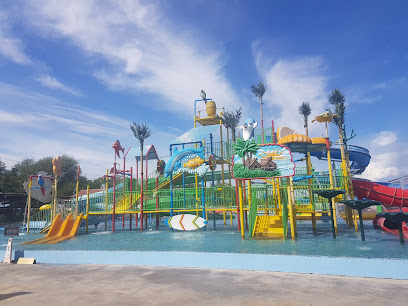
Lions Of Stone
Explore the ancient carvings at the Lions of Stone in Min Kun, where art meets history in a serene and captivating landscape.
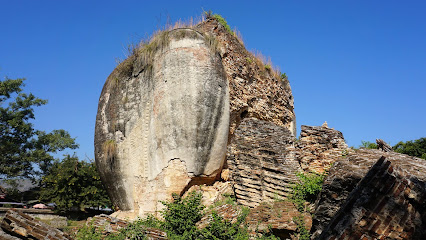
Essential places to dine
Mingalabar restaurant
Experience the best of authentic Burmese cuisine at Mingalabar Restaurant in Mandalay – where every dish tells a story.

HANA Yakiniku Japanese BBQ Restaurant
Discover the rich flavors of Japan at HANA Yakiniku – where grilling meets tradition in an unforgettable dining experience.
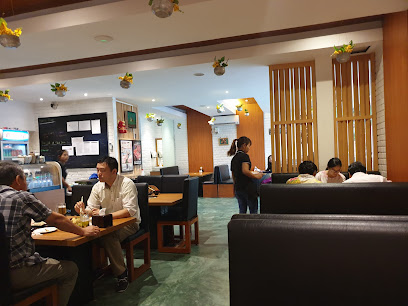
Golden Duck Mandalay
Experience authentic Burmese flavors at Golden Duck Mandalay, where tradition meets culinary excellence in every bite.
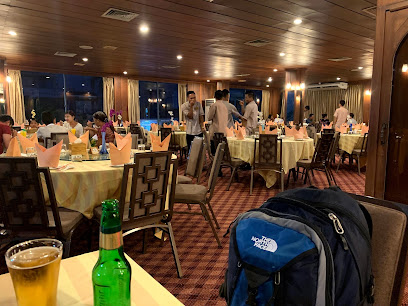
Unique Mandalay Tea Room
Discover authentic Burmese flavors at Unique Mandalay Tea Room - your go-to destination for breakfast and delightful teas in Mandalay.

Cafe City
Discover Café City in Mandalay: A cozy Western café and bar offering delicious international cuisine and refreshing drinks amidst vibrant surroundings.
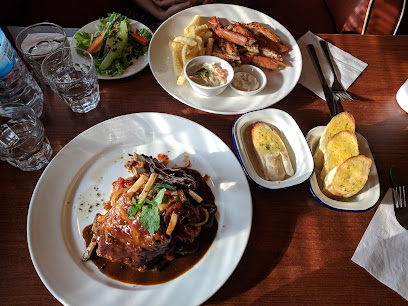
Aye Myit Tar Burmese Resturant
Discover authentic Burmese flavors at Aye Myit Tar Restaurant in Mandalay, where tradition meets taste in every dish.
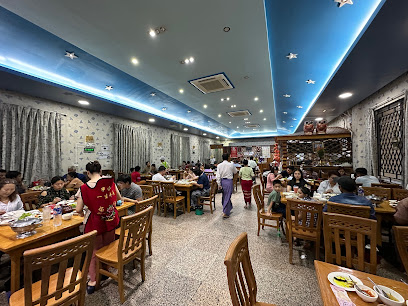
The Palace by Golden Duck
Discover the essence of Chinese cuisine at The Palace by Golden Duck in Mandalay – where tradition meets taste.

Shwe Mandalay Café
Experience authentic Burmese cuisine at Shwe Mandalay Café - a delightful culinary escape in the heart of Mandalay.
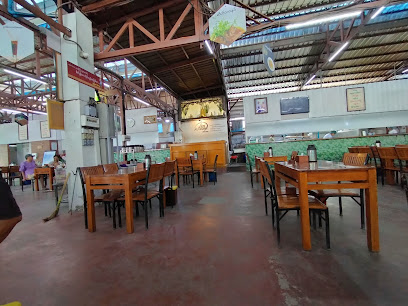
Daung Lann Gyi
Experience authentic Burmese flavors at Daung Lann Gyi - where every dish tells a story.
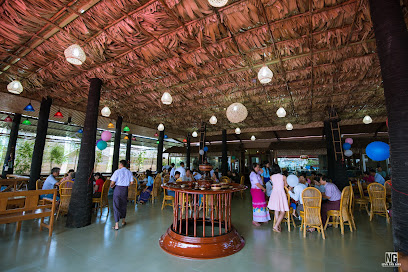
Shwe Mandalay Cafe
Discover authentic Burmese cuisine at Shwe Mandalay Cafe in Mandalay - where tradition meets flavor in every dish.
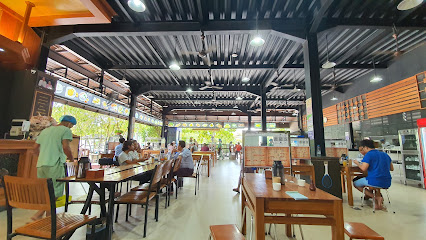
Karaweik Cafe 35
Discover authentic Halal cuisine at Karaweik Cafe in Mandalay, where tradition meets flavor in a welcoming atmosphere.
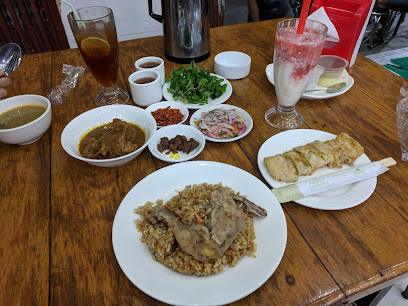
BBB European Restaurant
Savor the essence of Europe at BBB European Restaurant in Mandalay – where authentic flavors meet warm hospitality.
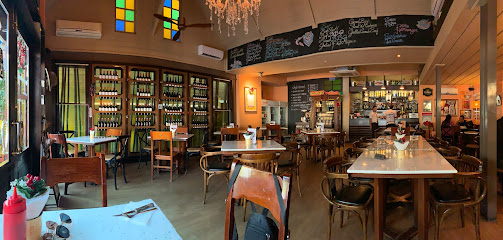
Indian Tadka Mandalay
Experience authentic Indian cuisine at Indian Tadka Mandalay - where every dish tells a story of tradition and flavor.
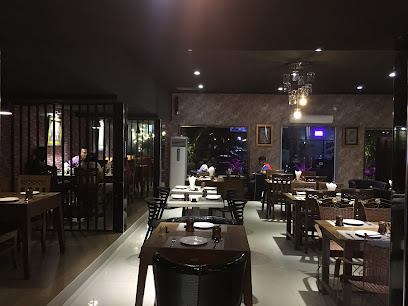
Royal Mandalay Café & Restaurant
Experience authentic Burmese flavors at Royal Mandalay Café & Restaurant – a delightful blend of tradition and taste in the heart of Mandalay.
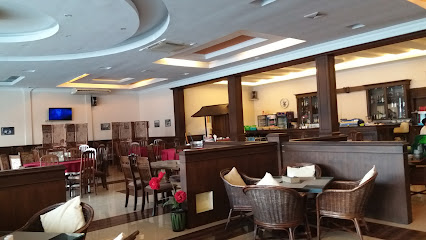
Pan Cherry Noodle House & Cafe
Experience authentic Burmese flavors at Pan Cherry Noodle House & Cafe in Mandalay - where delicious noodles meet aromatic coffee.
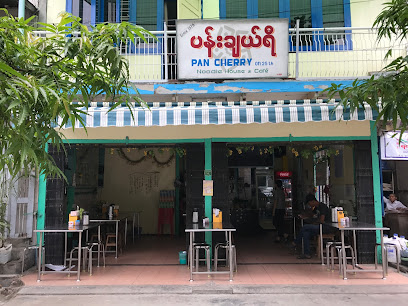
Markets, malls and hidden boutiques
Zay Cho
Explore Zay Cho Market in Mandalay – a vibrant local market filled with fresh produce, street food, and unique handicrafts.
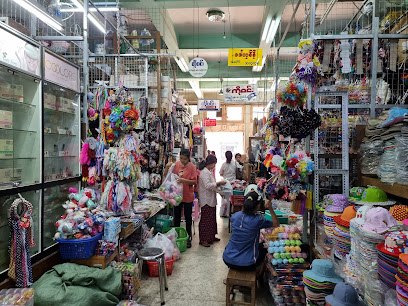
Unique Mandalay Tea Room
Discover the authentic taste of Myanmar at Unique Mandalay Tea Room, featuring delicious breakfast options and a wide selection of traditional teas.
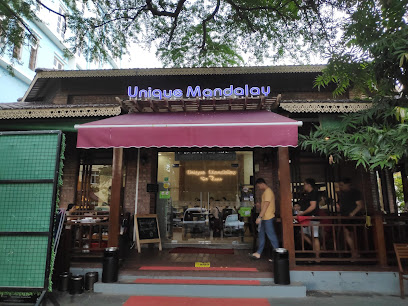
Diamond Plaza
Explore Diamond Plaza in Mandalay for a unique shopping and dining experience blending local culture with modern amenities.
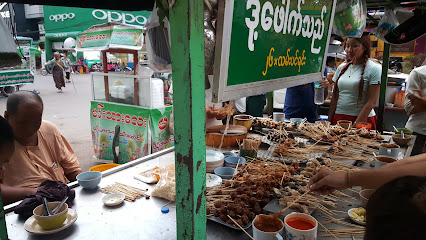
Ocean Supercenter
Explore the vibrant offerings of Ocean Supercenter in Mandalay, your ideal destination for fresh produce, international goods, and local delicacies.
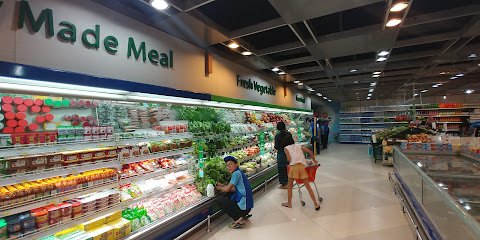
King Galon Gold Leaf Workshop
Discover the traditional art of gold leaf making at King Galon Gold Leaf Workshop in Mandalay, a unique cultural experience for art lovers and tourists alike.

Mandalay Jade and Gemstones Market
Explore the vibrant Mandalay Jade and Gemstones Market, a treasure trove of exquisite jade and gemstones reflecting the rich culture of Myanmar.
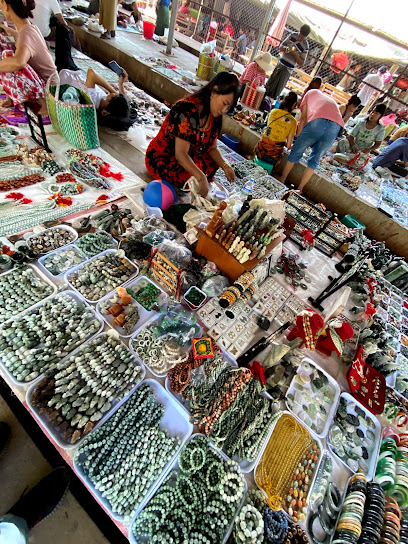
Jade Market
Explore the enchanting Jade Market in Mandalay, a vibrant hub for exquisite jade jewelry and a deep dive into Burmese culture.

UNiQUE (78th Street)
Explore the latest in technology at UNiQUE in Mandalay, your one-stop shop for computers and cell phones.
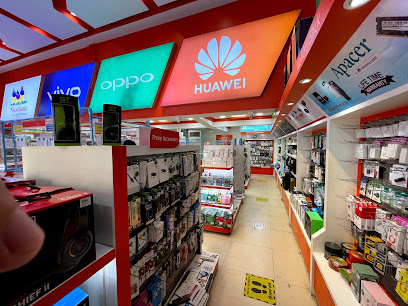
Queen of Dreamer
Explore the unique gifts and handcrafted treasures at Queen of Dreamer in Mandalay, a perfect stop for authentic local souvenirs.
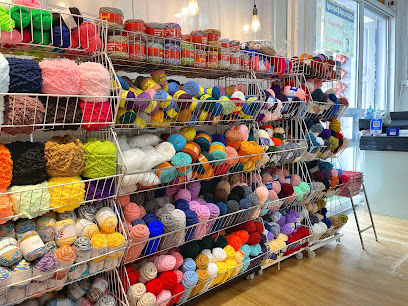
Little Mandalay
Discover unique fashion and accessories at Little Mandalay, the heart of Mandalay's vibrant shopping scene.
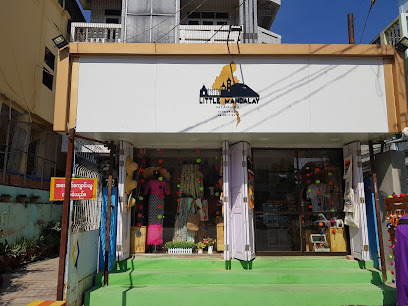
ZZ Online Shopping Mandalay
Discover the ultimate baby clothing store in Mandalay, offering stylish and comfortable attire for infants and toddlers.

CHARLES & KEITH
Explore trendy footwear and stylish accessories at CHARLES & KEITH in Mandalay's vibrant Sky Walk Shopping Mall.

Unicorn Slime Myanmar
Explore the vibrant world of Unicorn Slime Myanmar, a whimsical gift shop in Mandalay offering unique slime creations and playful souvenirs.

Smile Fancy Store
Discover Mandalay's vibrant fashion scene at Smile Fancy Store, where traditional meets contemporary in a delightful shopping experience.
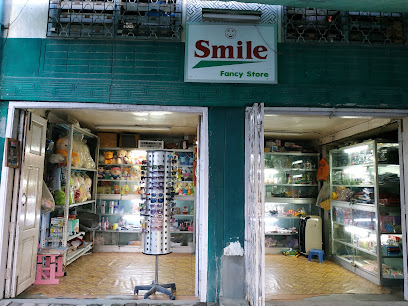
Dreamy Fancies
Explore Dreamy Fancies in Mandalay for a delightful shopping experience filled with unique fashion accessories and fun toys.

Essential bars & hidden hideouts
Apex Sky Bar
Discover the breathtaking views and vibrant atmosphere at Apex Sky Bar, Mandalay’s premier rooftop destination for cocktails and nightlife.
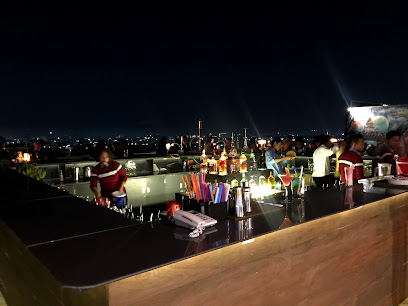
The Rock Gastro Bar
Experience the vibrant atmosphere and diverse menu at The Rock Gastro Bar in Mandalay, where local flavors meet international flair in a stylish setting.
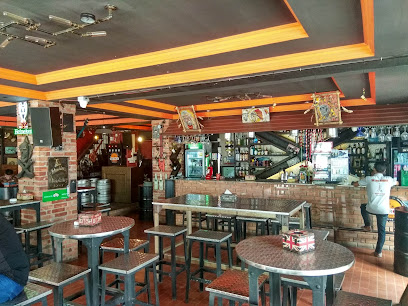
Brolly Sky Bar
Experience breathtaking views and vibrant nightlife at Brolly Sky Bar in Mandalay, the perfect place to unwind and savor the local culture.

Drink Me Cafe N Bar
Discover the vibrant atmosphere of Drink Me Cafe N Bar in Mandalay, where delightful drinks and delicious food await in a cozy setting.

42 Sky Bar and Restaurant
Experience unparalleled dining at 42 Sky Bar and Restaurant, where stunning views meet exquisite grill cuisine in the heart of Mandalay.
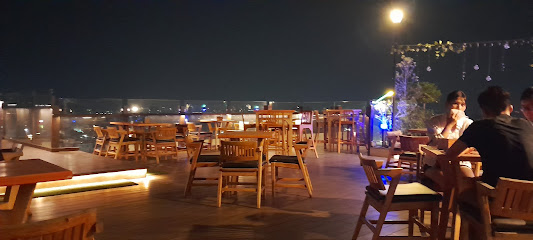
Old Version Live Music & Restaurant
Immerse yourself in the vibrant nightlife of Mandalay at Old Version Live Music & Restaurant, where music and culinary delights come together.
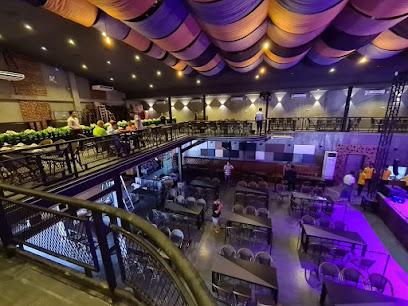
လူရိုင်း အကင်ဆိုင်
Experience the local nightlife at လူရိုင်း အကင်ဆိုင် in Mandalay, where refreshing drinks and a vibrant atmosphere await.

The Room Bar
Experience the vibrant nightlife at The Room Bar in Mandalay, where great drinks and lively conversations await in a cozy atmosphere.

Penthhouse Rooftop Pool & Bar
Experience luxury and breathtaking views at Mandalay's Penthhouse Rooftop Pool & Bar, a perfect retreat for relaxation and enjoyment.
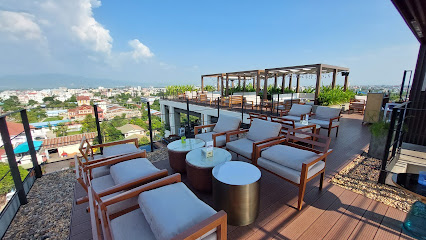
ဘုံဆိုင်
Discover the lively ambiance and local flavors at ဘုံဆိုင်, a must-visit bar in Mandalay's vibrant nightlife scene.
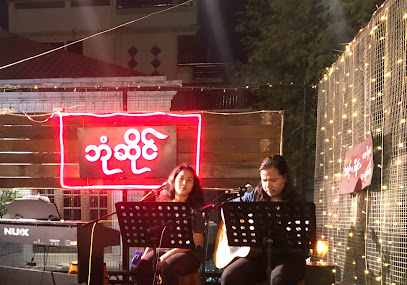
Hangover Sky Bar
Experience breathtaking views and vibrant nightlife at Hangover Sky Bar, Mandalay's premier rooftop destination for cocktails and relaxation.
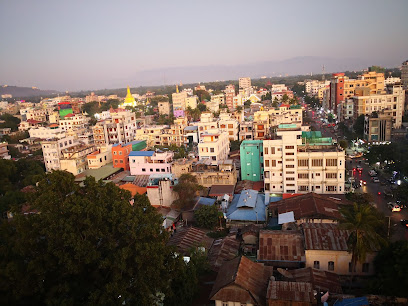
The Rooftop Bar
Experience breathtaking views and delightful grilled cuisine at The Rooftop Bar, Mandalay's premier destination for a memorable night out.
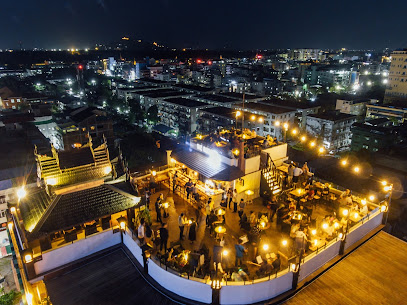
UFO Bar
Experience the otherworldly atmosphere of UFO Bar in Mandalay, a unique bar known for creative cocktails, live music, and an unforgettable vibe.
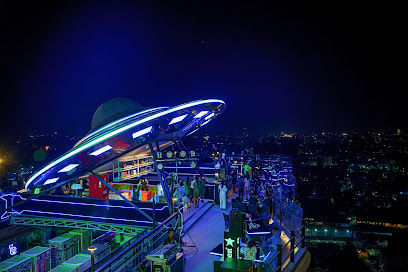
Bar in Bar
Experience the lively nightlife of Mandalay at Bar in Bar, where great drinks and dancing meet in an unforgettable atmosphere.
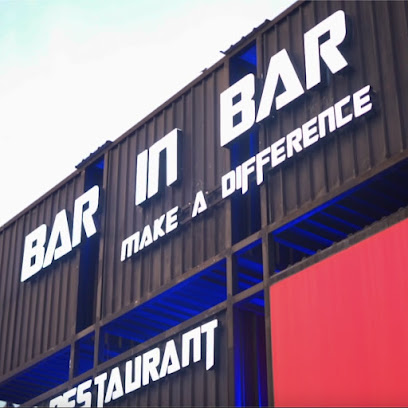
Nova Rooftop Bar
Discover the vibrant nightlife of Mandalay at Nova Rooftop Bar, offering stunning views, delightful cocktails, and an unforgettable atmosphere.
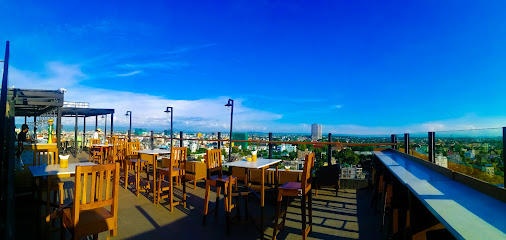
Local Phrases
-
- Helloမင်္ဂလာပါ
[mingalarbar] - Goodbyeသွားပါ
[swarr par] - Yesဟုတ်တယ်
[hote tai] - Noမဟုတ်ဘူး
[ma hote bu] - Please/You're welcomeကျေးဇူးပါ
[chit su bar] - Thank youကျေးဇူးပါ
[chit su bar] - Excuse me/Sorryအားလုံးကြည့်ပါ
[a lone chit par] - How are you?ဘယ်လို့ယူလို့
[be lo ye lu lo] - Fine. And you?ကျန်းမားနဲ့လား
[kan mar ne lar] - Do you speak English?အင်္ဂလိပ်လို့ရေးလို့
[ingale pyi loe lar loe] - I don't understandမဟုတ်မသိ
[ma hote ma si]
- Helloမင်္ဂလာပါ
-
- I'd like to see the menu, pleaseမီနူအောင်ကလစ်ကြည့်ပါ
[me nu aung kalut chit par] - I don't eat meatအသီးမမဟုတ်
[a si ma ma hote] - Cheers!အစားကြည့်
[a sa chit] - I would like to pay, pleaseငွေကျေးဇူးပါ
[ngwe chit su bar]
- I'd like to see the menu, pleaseမီနူအောင်ကလစ်ကြည့်ပါ
-
- Help!ကျန့်သှားပါ
[kan shwar par] - Go away!နှင့်သွားပါ
[nan swarr par] - Call the Police!ရဲ့ရဲ့စစ်ဆေးပါ
[ye ye sahshei par] - Call a doctor!ဆရာကျေးပါ
[sha ya chit par] - I'm lostခံစားထိုးပါ
[hcan sa htoe par] - I'm illသွားလျှင့်ပါ
[swarr hlan par]
- Help!ကျန့်သှားပါ
-
- I'd like to buy...ဝယ်ယူလို့ပါ
[wai lu loe par] - I'm just lookingနင်းလက်ခန်းမဟုတ်
[nan leh kan ma hote] - How much is it?အစုံးဘူးလား
[a zun bu lar] - That's too expensiveဒါမှာခိုးဘူး
[da ma hka bu] - Can you lower the price?စျိုးလို့လွန်းလို့ရေးလို့
[soe loe lwann loe]
- I'd like to buy...ဝယ်ယူလို့ပါ
-
- What time is it?ဘယ်နာမည်လဲ
[be na ma nyi le] - It's one o'clockတစ်နာရီပါ
[tit na ri par] - Half past (10)ဆယ်နာရီပါ
[sa na ri par] - Morningနန်းလွန့်
[nan lwan] - Afternoonနောက်နွား
[naok naw] - Eveningည
[nye] - Yesterdayမနေ့
[ma ne] - Todayယနေ့
[ya ne] - Tomorrowမနက်
[ma naok] - 1တစ်
[tit] - 2နှစ်
[hna] - 3သုံး
[saun] - 4လေး
[lei] - 5ငါး
[nga] - 6ခြောက်
[hkyauk] - 7ခွေ
[hkwai] - 8ရှေ့
[hre] - 9ကိုး
[koe] - 10ဆယ်
[sa]
- What time is it?ဘယ်နာမည်လဲ
-
- Where's a/the...?အမှားဘူးလဲ
[ama bu le] - What's the address?လိပ်စာလဲ
[le paa le] - Can you show me (on the map)?မင်းမို့မို့ကြည့်လို့ရေးလို့
[ming mu mu chit loe lar loe] - When's the next (bus)?နောက်မှားဘူးလဲ
[naok mha bu le] - A ticket (to ....)လက်ဆင်တယ် (သို့ ...)
[leh shan tai (thoe ...)]
- Where's a/the...?အမှားဘူးလဲ
History of Mandalay
-
Mandalay was founded in 1857 by King Mindon Min of the Konbaung Dynasty. The king envisioned Mandalay as a center for Buddhism and Burmese culture. He commissioned the construction of the Mandalay Palace, which became the royal residence and the administrative center of Upper Burma.
-
The Mandalay Palace, completed in 1861, stands as an iconic symbol of Burmese monarchy. The palace complex once contained numerous buildings, including royal chambers, administrative offices, and ceremonial halls. Its architectural design reflects traditional Burmese styles, with intricate wood carvings and gold leaf adornments.
-
Mandalay fell to British forces in 1885 during the Third Anglo-Burmese War. The British exiled King Thibaw Min, the last Burmese monarch, marking the end of the Burmese monarchy. Mandalay subsequently became part of British Burma, which significantly altered the city’s administrative and cultural landscape.
-
During World War II, Mandalay was occupied by Japanese forces from 1942 to 1945. The city suffered extensive damage from Allied bombings and battles. The Mandalay Palace was largely destroyed, with only a few structures surviving. The war left a lasting impact on the city's infrastructure and population.
-
After Myanmar gained independence from Britain in 1948, Mandalay became a major cultural and economic center in the newly established Union of Burma. Efforts were made to restore historical sites and promote Burmese traditional arts and crafts. The city continued to grow, attracting tourists and scholars interested in its rich history.
-
Mandalay is renowned for its cultural heritage, including traditional Burmese dance, music, and theater. The city is home to numerous pagodas, monasteries, and artisan workshops. Mandalay Hill, a prominent pilgrimage site, offers panoramic views of the city and surrounding region. The Mahamuni Buddha Temple is another important religious site, housing one of Myanmar's most revered Buddha images.
-
Today, Mandalay is a vibrant city that blends historical charm with modern developments. It serves as a hub for commerce, education, and tourism in Myanmar. The city hosts various festivals and events, such as the annual Thingyan Water Festival and the Taungbyone Nat Festival, which celebrate local traditions and community spirit.
Mandalay Essentials
-
Mandalay is accessible by air, train, and bus. Mandalay International Airport (MDL) serves several international and domestic flights. From the airport, you can take a taxi or a shuttle bus to the city center. The journey usually takes around 45 minutes. Trains from Yangon and other major cities also connect to Mandalay, with the central train station located in the heart of the city. Long-distance buses from Yangon and other regions offer a more economical option, with several bus terminals located around the city.
-
Getting around Mandalay is convenient with various transportation options. Taxis and ride-hailing services like Grab are widely available. Motorbike taxis and trishaws are also common for shorter distances. Public buses operate within the city, though routes can be complex for non-locals. Renting a motorbike or bicycle is a popular choice for exploring at your own pace. Additionally, boat services are available for travel along the Irrawaddy River.
-
The official currency in Myanmar is the Myanmar Kyat (MMK). Credit cards are accepted in some hotels, restaurants, and shops, but it is advisable to carry cash, especially in smaller establishments and markets. ATMs are available throughout Mandalay, but may sometimes be out of service or have withdrawal limits. It is recommended to exchange currency at official exchange counters or banks for the best rates.
-
Mandalay is generally safe for tourists, but standard precautions should be taken. Avoid walking alone at night in poorly lit areas. Be cautious with your belongings in crowded places such as markets and tourist attractions. Areas like the central market and some outskirts have higher instances of petty crime targeting tourists. Always stay vigilant and aware of your surroundings.
-
In case of emergency, dial 199 for police assistance or 192 for medical emergencies. Major hospitals like Mandalay General Hospital and private clinics provide medical services. It is advisable to have travel insurance that covers health emergencies. Pharmacies are available across the city for minor health issues and over-the-counter medications.
-
Fashion: Do dress modestly, particularly when visiting religious sites. Avoid wearing revealing clothing. Religion: Do respect local customs and remove your shoes and socks before entering temples and pagodas. Public Transport: Do be respectful to other passengers and offer your seat to the elderly or monks. Don't eat or drink on public transport. Greetings: Do greet people with a slight bow or a smile. Handshakes are less common. Eating & Drinking: Do try local dishes and accept food offerings graciously. Don't refuse hospitality, as it may be considered impolite.
-
To experience Mandalay like a local, visit the bustling Zegyo Market for a taste of local life and fresh produce. Engage with locals, who are often friendly and eager to share stories about their city. Don't miss visiting iconic sites like Mandalay Hill and the Royal Palace. For a unique experience, take a boat trip to the ancient city of Mingun or explore the nearby U Bein Bridge at sunset for spectacular views.
Trending Landmark in Mandalay
Nearby Cities to Mandalay
-
Things To Do in Pyin Oo Lwin
-
Things To Do in Bagan
-
Things To Do in Kalaw
-
Things To Do in Inle Lake
-
Things To Do in Naypyidaw
-
Things To Do in Mrauk U
-
Things To Do in Pyay
-
Things To Do in Pai
-
Things To Do in Imphal
-
Things To Do in Sittwe
-
Things To Do in Aizawl
-
Things To Do in Mae Hong Son
-
Things To Do in Cox's Bazar
-
Things To Do in Ngapali
-
Things To Do in Chittagong










